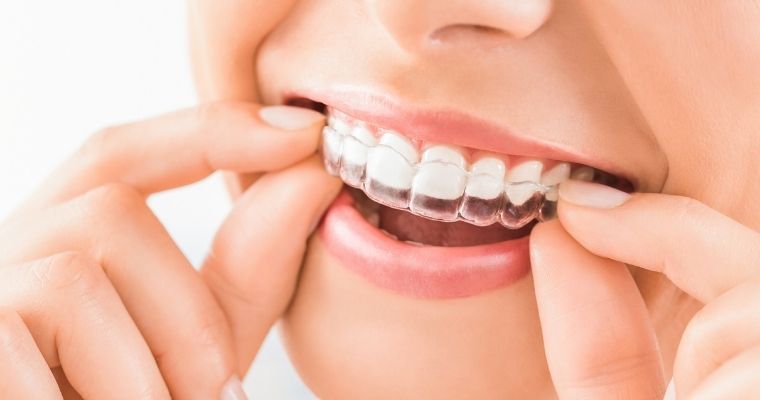Orthodontic treatment has come a long way, offering patients more options than ever to achieve a straighter and healthier smile. Among the most popular choices are traditional braces and Invisalign clear aligners. At Pendleton Orthodontics, we understand that choosing between these options can be daunting, which is why we’re here to help you navigate the decision-making process. In this article, we’ll explore the differences between Invisalign and braces, their pros and cons, and how each option can benefit you. Whether you’re a teenager or an adult seeking orthodontic treatment, understanding the options available is the first step towards achieving the smile of your dreams.
Understanding Invisalign and Braces
Before diving into the comparison between Invisalign and braces, it’s essential to understand how each treatment works. Braces consist of metal brackets that are bonded to the teeth and connected by wires and rubber bands. They work by applying gentle pressure to gradually shift the teeth into the desired position. On the other hand, Invisalign utilizes a series of clear, removable aligners that are custom-made to fit snugly over the teeth. These aligners apply controlled force to move the teeth over time, offering a more discreet alternative to traditional braces. Both options have their unique features and benefits, and understanding how they function is crucial in determining which option is best suited to your needs.
Pros and Cons of Invisalign
Pros
- Aesthetics: Invisalign aligners are nearly invisible, making them a popular choice for individuals concerned about the appearance of traditional braces.
- Removability: Invisalign aligners are removable, allowing for easier oral hygiene maintenance and the ability to eat without restrictions.
- Comfort: Invisalign aligners are made of smooth plastic material, reducing the risk of irritation to the cheeks and gums often associated with traditional braces.
- Convenience: The treatment involves fewer visits to the orthodontist compared to traditional braces, as there are no adjustments needed.
- Predictable Results: Invisalign treatment utilizes advanced technology to predictably move teeth into the desired position, providing a clear treatment plan from start to finish.
Cons
- Compliance: Invisalign aligners must be worn for at least 22 hours per day to achieve optimal results, requiring commitment and discipline from the patient.
- Speech Impediments: Some individuals may experience temporary speech changes or a slight lisp when first wearing Invisalign aligners until they adjust to speaking with them.
- Cost: Invisalign treatment may be more expensive than traditional braces, depending on the complexity of the case and the duration of treatment.
- Limited Treatment Options: Invisalign may not be suitable for severe orthodontic issues or cases requiring significant tooth movement.
- Maintenance: Invisalign aligners require regular cleaning to prevent bacteria buildup and maintain their clarity, which can add to the daily oral hygiene routine.
Pros and Cons of Traditional Braces
Pros
- Effectiveness: Traditional braces are highly effective for correcting a wide range of orthodontic issues, including severe misalignment and bite problems.
- Comprehensive Treatment: Traditional braces can address complex orthodontic issues that may not be suitable for Invisalign treatment alone.
- Durability: Metal braces are known for their durability and ability to withstand the forces required to move teeth into the desired position over time.
- Cost-Effectiveness: Traditional braces may be more cost-effective than Invisalign treatment in certain cases, especially for individuals with extensive orthodontic needs.
- No Compliance Required: Unlike Invisalign aligners, traditional braces are fixed to the teeth, eliminating the need for patient compliance in wearing and removing aligners.
Cons
- Aesthetics: Traditional metal braces are highly visible and may be less aesthetically pleasing to some individuals, especially adults.
- Oral Hygiene Challenges: Metal braces can make it more difficult to clean teeth properly, leading to an increased risk of tooth decay and gum disease if oral hygiene is not maintained diligently.
- Diet Restrictions: Certain foods and snacks may need to be avoided or modified to prevent damage to the braces, such as hard, sticky, or chewy foods.
- Discomfort: Metal braces may cause discomfort or irritation to the cheeks, lips, and gums, especially during the initial adjustment period or after tightening appointments.
- Longer Treatment Time: Treatment with traditional braces may take longer than with Invisalign, particularly for complex orthodontic cases, requiring regular adjustments and longer overall treatment duration.
Conclusion
Both Invisalign and traditional braces offer effective solutions for achieving a straighter and healthier smile. Understanding the differences between these two orthodontic treatments can help you make an informed decision based on your specific needs, lifestyle, and preferences.
While Invisalign offers advantages such as improved aesthetics, comfort, and convenience, traditional braces remain a tried-and-true method for correcting various orthodontic issues, particularly for complex cases. Ultimately, the choice between Invisalign and traditional braces depends on factors such as treatment goals, severity of the orthodontic problem, and personal preferences.
At Pendleton Orthodontics, our team of orthodontic specialists is committed to helping you achieve your dream smile through personalized treatment plans tailored to your unique needs. Whether you opt for Invisalign or traditional braces, rest assured that you’re in good hands with our expert care and support every step of the way.
